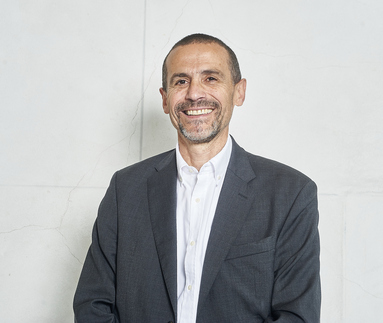
AI-generated summary
This article examines the current state and future challenges of fusion energy development in Europe, focusing on insights from Gianfranco Federici, Programme Manager at EUROfusion. EUROfusion coordinates fusion research across 26 countries, aiming to maintain Europe’s leadership by developing the DEMO demonstration power plant, which follows the ITER experimental reactor. While ITER is designed to validate fusion physics and technology, DEMO must take a significant step forward by reliably generating electricity at scale with high availability and fuel self-sufficiency. This requires overcoming major technological hurdles such as developing breeding blankets that produce tritium fuel internally, managing extreme heat extraction, and enabling remote maintenance in high-radiation environments.
Federici highlights key technology gaps including the low readiness of critical components like breeding blankets, radiation-resistant materials, and remote handling systems. These must be rigorously tested and validated through dedicated facilities like IFMIF-DONES. Despite increasing urgency driven by climate goals and energy security, fusion development faces strict regulatory scrutiny as a nuclear technology, making thorough qualification essential. He stresses the need to balance ambition with realism by investing now in parallel development paths to avoid delays and ensure fusion becomes a strategic part of a diversified, clean energy future. Emerging technologies and startups may accelerate progress if they can meet nuclear safety standards. Overall, fusion’s complexity demands sustained, coordinated efforts akin to historic large-scale projects to realize its potential as a revolutionary energy source.
Fusion Energy: Gianfranco Federici Outlines the Technological Challenges Europe Must Overcome to Move from Experiments to Operational Plants and Secure Its Role in the Future Energy Landscape
This article has been translated using artificial intelligence
The Fusion Forward series continues. Following Carlos Alejandre’s intervention, which outlined the industrial roadmap for fusion energy in Europe, we now take a closer look at the technological challenges ahead with Gianfranco Federici, Programme Manager atEUROfusion.
EUROfusion is the European consortium that coordinates fusion energy research, bringing together more than 30 organizations and universities across 26 countries. Its mission is clear: to consolidate Europe’s leadership in the development of fusion by coordinating resources, infrastructure, and talent. Under the EUROfusion umbrella, the design of DEMO—the future demonstration power plant that will follow ITER—is being developed, alongside strategic programs such as IFMIF-DONES (for materials testing) and the advancement of breeding blanket systems.
Federici has spent decades engaged in the development of fusion technologies and, through EUROfusion, has contributed first-hand to progress at ITER and preparations for DEMO. His talk at the Future Trends Forum focused on answering a critical question: Where do we really stand on the path to fusion energy, and what challenges still lie ahead?
Before reaching fully competitive commercial plants, it will first be necessary to build a first generation of facilities capable of producing electricity reliably and continuously—even if costs remain high in the early stages.
If you’d like to watch Gianfranco Federici’s full talk, you can do so in this video:
Gianfranco Federici: “Fusion: Where are we now, and what challenges remain?” #FusionForward
From ITER to DEMO: An Essential Qualitative Leap
ITER is the first international experiment designed to produce sustained fusion energy at large scale. Its role is fundamental: to validate the physics and part of the technology required for the next step. However, as Federici cautions, ITER will not resolve all the challenges that an operational power plant must face.
Its successor, known as DEMO, will need to deliver a true qualitative leap. The objective is not only to generate fusion energy, but to integrate it into an electric power plant that operates reliably, with high availability, and without failures. This means that component reliability becomes a top priority—something that is not ITER’s primary mission.
Moreover, DEMO must be fuel self-sufficient. Deuterium-tritium fusion consumes about 55 kilograms of tritium per year for each gigawatt of output. Current global reserves are estimated at just 30–40 kilograms and are in decline, making it essential to produce tritium inside the plant itself. This is to be achieved through breeding blankets—modules surrounding the plasma that, in addition to absorbing the heat generated by the fusion reaction, produce tritium, the fuel required by the reactor. They do so through reactions with lithium contained in their structure, effectively turning the blanket into an internal fuel factory that enables plant self-sufficiency. No such system has ever been built or tested, and the technological maturity of existing concepts remains low.
Another critical challenge lies in heat extraction. In magnetic fusion, energy is transferred by neutrons impacting the blanket. To convert this into electricity, heat must be extracted at high temperature and pressure, introducing complex thermal and structural engineering challenges. Added to this are remote maintenance systems, which must operate in radiation environments of up to 2 kGy/h—levels so extreme that human intervention is impossible. These conditions require advanced remote handling technologies capable of functioning where most materials and electronic components would degrade rapidly.
Technology Gaps We Must Close Now
Beyond ITER, critical gaps remain that will determine the leap toward industrial deployment. For Federici, one of the most pressing is the low technology readiness level (TRL) of key elements required for DEMO, such as breeding blankets, radiation-hardened materials, and remote handling systems. All of these are highly complex developments, with long qualification cycles and no guaranteed outcomes.
Experience from past projects shows that introducing new materials or manufacturing processes into a nuclear environment requires time, exhaustive testing, and validation of every detail. As Federici reminds us, “the devil is in the details”—any integration failure could compromise the entire system.
Another key gap lies in the validation of components under real operating conditions. ITER will not fully cover critical areas such as the complete tritium fuel cycle or the large-scale operation of breeding blankets. These must therefore be developed in parallel through dedicated infrastructures. Initiatives such as IFMIF-DONES in Granada, which will enable testing of materials under intense irradiation, or the new breeding blanket handling center in Denmark, are essential steps to reduce risks and prevent future bottlenecks.
Europe currently leads investment in these areas alongside China, while startups are beginning to emerge with more agile approaches. However, the scale of the challenge demands a sustained, coordinated effort across public institutions, industry, and research centers.
A Clash of Needs: Accelerating Without Cutting Corners
Federici describes the current moment as a “collision between two opposing forces.” On the one hand, there is mounting pressure to accelerate the arrival of fusion to the market, as a response to the climate crisis and the need to secure energy supply. On the other, there is the reality that technical and regulatory hurdles remain—hurdles that cannot be bypassed with shortcuts.
Fusion is, above all, a nuclear technology, and as such it will be subject to rigorous scrutiny by regulators. Every new material, component, or manufacturing process will have to undergo long qualification procedures, with zero tolerance for errors that could compromise safety.
To bridge this gap, it is essential to invest today in the development and validation of technologies not covered by ITER, while at the same time maintaining the political and financial momentum fusion requires to establish itself as a strategic pillar of the future energy system.
The message is clear: if we do not begin addressing these challenges in parallel now, the transition from research to industry could stall for decades. The opportunity is within reach—but the time to act is now.
Looking Ahead Without Failing to Act Today
Federici draws comparisons with some of humanity’s greatest projects to put the magnitude of the fusion challenge into perspective. In his view, it is even more complex than the Manhattan Project, due to the vast number of interdependent systems that must be coordinated. A more accurate analogy, he argues, is the Apollo Program: a monumental effort made up of multiple subsystems, each paving the way for the next stage.
He emphasizes the importance of combining ambition with realism. Fusion will be central to the future energy landscape, but its development takes time. That cannot be an excuse to delay investment in solutions we already have to cut emissions—such as nuclear fission and renewables.
“If we act in parallel, we can reach the goal with a stronger and more diversified energy system,” he stresses.
On emerging technologies such as high-temperature superconducting (HTS) magnets, Federici highlights their potential to increase magnetic field strength and enable more compact designs. However, he reminds us that design must be integrated from the outset, incorporating safety, shielding, and maintainability to ensure that technological breakthroughs translate into viable and safe power plants.
He also acknowledges the growing role of startups and disruptive approaches, which can accelerate innovation in areas of high technological risk. If they succeed in passing the demanding validation phases required in nuclear environments, these advances could prove decisive in shortening timelines and making fusion a key component of a clean, safe, and competitive energy system.
This article is part of the broader analysis developed within the Future Trends Forum. The full report, Fusion Energy: A Revolution in Progress, brings together insights from more than twenty international experts and defines five critical pillars for scaling fusion energy as a driver of climate action, economic competitiveness, and technological leadership.
Download it here to explore in detail how we can start building tomorrow’s energy system—today.

Programme Manager at EUROfusion Consortium. Germany



